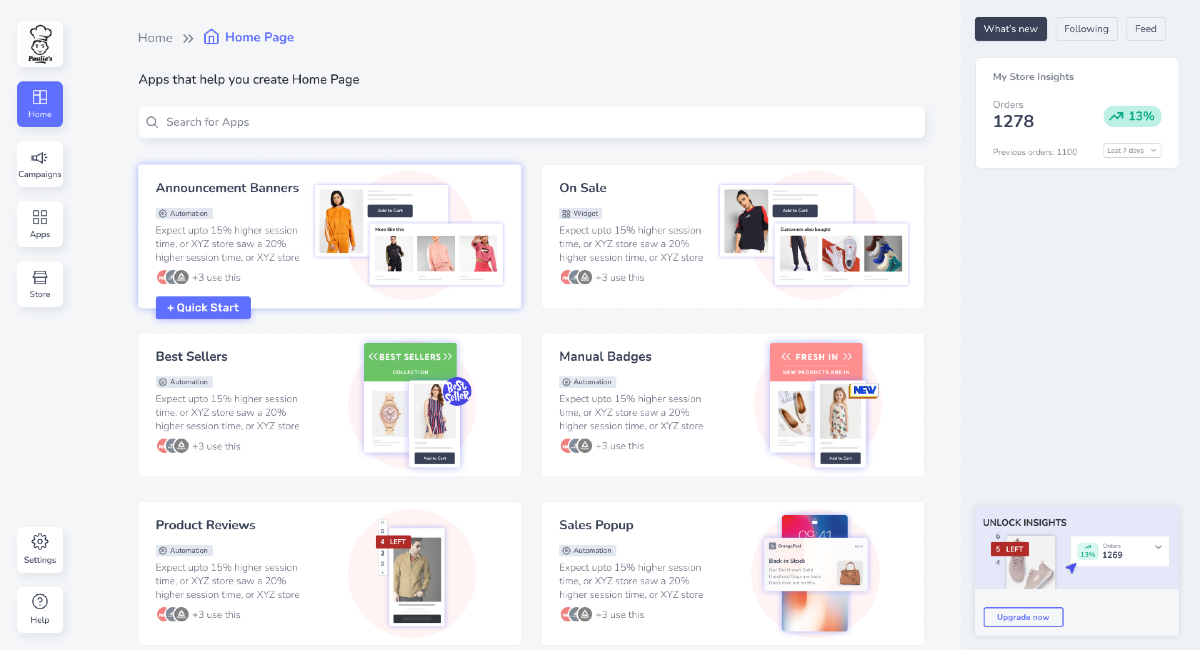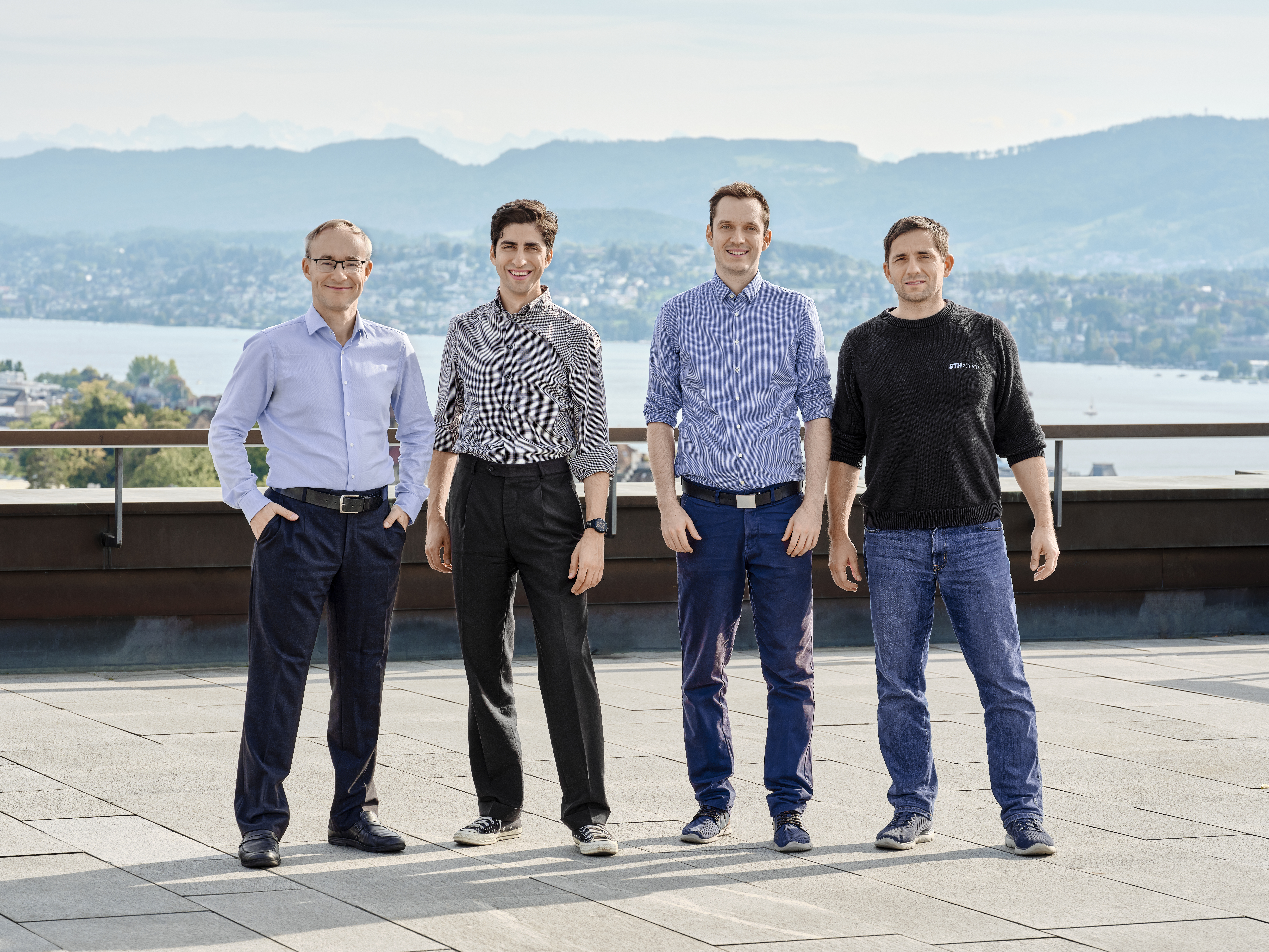Talking to Valentina Milanova, the still just 28-year-old founder of U.K. femtech Daye, is best described as an exhilarating experience. During our interview, she talks in and around her topic — building a startup supporting women’s sexual and reproductive health — non-stop for the best part of an hour, barely pausing for breath and without needing to be prompted to unpack the detail (although an engaged listener will be forced to interject with exclamations and follow-on questions as she lays out her sharp takes) — dispensing, at times, part-fascinating, part-horrifying insights from the coal-face of a field that’s suffered from a chronic lack of research and innovation for far too long.
The thrill comes in knowing she’s intent on being the change — and bringing positive change — to gynaecological health by working with clinicians to do the research and build out a platform that’s designed to open up an overlooked and neglected ‘Pandora’s Box’ of intimate female health issues and put women in the driving seat over choices affecting their bodies and lives.
Daye’s first product — a CBD-infused cramp-fighting tampon, which launched back in 2019 — was just the start (although the startup has built up a user-base of some 60,000 subscribers thus far for that direct-to-consumer play, selling “fully sustainable” organic tampons which are also proudly touted as produced to “medical device standards” and feature eco innovations like a flushable, biodegradable wrapper and a non-plastic (sugarcane) applicator); Milanova has always had a wider “gynae” health mission in mind for Daye and is now rolling out the next pieces of the plan with the launch of a tampon-based at-home vaginal microbiome screening kit that it’s billing as a “world first”.
The at-home testing experience is more convenient, private and less intrusive for women than the traditional option of going to see their doctor or attending a dedicated sexual health clinic where a health worker would need to take a swab. Instead, they just insert a tampon into their vagina and remove it. The test tampon then goes in the specimen bag provided — and they post it back to Daye’s lab for analysis, with their results delivered back digitally. And of course they don’t just get a bunch of raw medical data; the product mission is to offer an informative, accessible informational experience, with analysis of the screening data presented in language (and with graphics) that make it easy for anyone to understand.
The analysis comprises a breakdown of certain good and bad bacteria that were detected (or not detected) in the user’s sample, along with explanations and recommendations for how they might want to act on the information — such as downloading a PDF to take with them to a doctor; or by the platform pointing them to where they can locate a local sexual health clinic if an analysis suggests the user should get checked for infections.
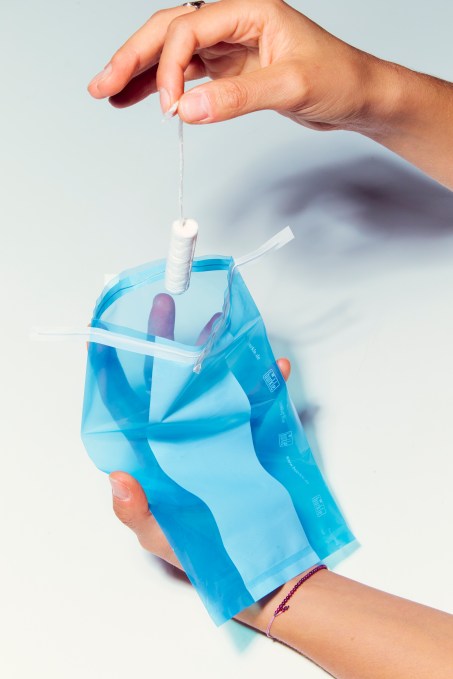
Image credits: Daye
“This was actually always part of the original vision for Daye. From the earliest pitch decks I had ever created. The intention for us was always to deliver on a number of different areas of gynaecological health — not just changing the tampon so it serves people better and so it delivers pain relief. We always saw tampons as a potential tool for bridging the many gaps that exist in gynaecological health today. So tampons can be used to deliver all sorts of medications to the vaginal canal and tampons can also be used to really effectively screen vaginal health for a number of different diseases and infections,” Milanova tells TechCrunch.
“This isn’t a novel scientific discovery — it’s existing scientific knowledge that we’re building upon. Since the 1990s, when researchers from Westminster University first pioneered the method of menstrual tampon screening, we’ve known that tampons have greater levels of sensitivity and specificity, or diagnostic capacity, compared to vaginal swabs and cervical swabs and urinary swabs for the detection of vaginal infections and STIs [sexual transmitted infections]. So what we’re doing now with the introduction of the gynaecological health screen is we’re hoping to democratize access to insightful gynaecological health information that is not typically available through other providers or through the NHS [the UK’s National Health Service].”
Daye’s first vaginal microbiome screening tests are focused on identifying two pathogens: mycoplasma and ureaplasma — which Milanova says are typically asymptomatic but associated with a negative impact on the reproductive function — putting carriers at a higher risk of miscarriage, pre-term labor or ectopic pregnancy.
The vaginal microbiome screening test could therefore be of particular interest (initially) to women who are looking for explanations for fertility issues, though she also points to wider utility, noting: “The health of the vaginal microbiome in general not only has repercussions for your fertility, it also has an implication on your risk of contracting an STI and your risk of contracting a vaginal infection. And again this isn’t novel scientific discovery that we have made — we’re largely building on top of existing scientific knowledge.”
Daye is also planning to introduce more types of tests as it continues to develop the screening product — including screening for STIs. It’s also currently conducting research in conjunction with Liverpool Women’s Hospital into pathogens with suspected links to certain conditions that can affect women (or people assigned female at birth), like polycystic ovary syndrome (PCOS) and endometriosis, with the aim of further expanding the utility of the screening test by (it hopes) helping to verify those links.
In addition to launching the vaginal microbiome screening kit — which will be offered to users in the UK in the coming days — Daye is busy building out a gynaecological health platform that will do more than just distribute individual screening results. The idea is to offer a place where women can get validated, accessible information about the full spectrum of gynaecological health — along with expert support and guidance to help them access appropriate treatments (or make helpful lifestyle changes) for any specific issues identified.
She explains that Daye wants this platform to arm users with accessible information and access to diagnostic and decision-support services — such as by offering digests on the latest scientific research; by digitizing information on specific conditions, such as PCOS and endometriosis; and by offering support with wider gynaecological choices — such as, in the case of another forthcoming product, by offering a tool to help women pick a contraception method that’s best suited for their health and lifestyle.
“[With the vaginal microbiome screening] we don’t just detect a pathogen and slap it on the screen of a patient and let them figure out. A big part of what we aim to do… is really make it super easy for people to understand what gardnerella vaginalis means or what mycoplasma hominis means on a very practical level — so what does this mean for your diet; what you should be supplementing with; what materials you should be using in your underwear… We want to make it very digestible [for users],” she explains, noting that the platform will provide all this general information to users free of charge — i.e. regardless of whether they pay for the screening kit. (Though only the latter can give a user a snapshot of the bacterial balance inside their own vagina, of course.)
Daye’s forthcoming contraception-support service (which Milanova says will be launching in the UK before the end of the year; along with PCOS and endometriosis diagnostic products) isn’t linked to the microbiome screening product per se — but rather relies upon a decision-tree structure, ingesting responses provided by the user taking a detailed questionnaire about their health and contraception needs. But in both cases Daye’s technology is acting as a diagnostic aid for its in-house clinicians or pharmacists — who review suggestions (such as for contraception or the screening analysis) and confirm the recommendations that are sent to the user, so there’s always (for now) a qualified “human in the loop”, per Milanova.
The user can then choose — for example — to get the recommended contraception prescribed and delivered to their door by Daye for a fee (at least for methods of contraception that don’t require fitting by a doctor). Or, if a screening analysis indicates they have a bacterial imbalance, they could choose to buy probiotics from Daye, nudged by a suggestion that supplementation can help boost the balance of good bacteria in their vagina. But the diagnosis/recommendations themselves are free — so its business model here is taking a quasi freemium approach.
Series A support for a gynae health platform
“One of the values we have as an organization is we don’t think you should need a medical degree in order to understand the workings of your body — and we want to be able to enable access to digestible gynaecological health information, which is currently quite hard to get a-hold of,” says Milanova, fleshing out the purpose behind the platform. “We know the majority of our community will not be able to sit down and read a bunch of research papers. Not just because they’re written in a language that’s sometimes hard to understand but also because they’re often behind paywalls so you need to pay for access to these research papers. So we do that and then we synthesize the information for our community.”
“The vision for why we’re doing [all this] is to enable every patient to have access to one, comprehensive gynaecological health platform that enables them to look after every component of their gynaecological health — from their menstrual health through to menopause and beyond; so covering vaginal health, hormonal health and really enabling people to understand their health record and understand their health profile covering those different areas,” she adds.
Today, Daye is announcing a £10 million (~$11.5M) Series A round — which includes investment from London-based Hambro Perks, global VC firm MassMutual Ventures and Canadian VC Cross Border Impact Ventures — and brings its total raised to £19M (or just under $22M) to date.
As well as funding the launch of the vaginal microbiome screening kit, and fuelling its roll out of the wider gynae health support platform, the Series A funding will be used for a phased expansion of Daye’s products into the US market, per Milanova. “The naked tampon [i.e. the tampon that does not have any CBD oil infused in it] and the probiotics we’ll make available in the US right now,” she notes, adding: “Then we’re hoping early next year to be able to introduce the platform as part of a bigger effort for us to launch into the US.”
Daye is also hoping to use the funding to explore branching its business model by diversifying its core direct-to-consumer (D2C) retail business.
“One thing that we’re really keen to do with this round of funding is increase B2B sales so that workplaces can cover access to some of the services that we provide — and this is partially us adjusting our business model in light of the cost of living crisis which has really affected consumer trust and confidence,” she says, pointing to “a bigger trend” it was noticing even before the cost of living crisis — “of women demanding access to free period care services as well as free gynaecological health services from their employer” — as being something it’s hoping it can tap into by selling services direct to employers to provide its stuff free to their staff as a pro-female health perk.
“We believe there’s a role that we can play in improving access to better gynaecological health for working women,” she suggests — while emphasizing that this is not a pivot and D2C will “always be a central part of what we do because we believe in personal agency over your health record and we want to give every person the tools that they need to look after their health”.
In terms of positioning, Daye could be described as a sort of ‘anti-Goop’, given its science-grounded, research referencing approach and a keen embrace of regulatory oversight — which contrasts with Goop, the much mocked “wellness and lifestyle” publishing-plus-retail brand founded by the actress Gwyneth Paltrow back in 2008, selling a clickbaity confection of products and practices — from jade “yoni” eggs and vaginal steaming to bottled “psychic vampire repellant” (yes, really) and that infamous scented candle with the eye-catching name: “This smells like my vagina”. (Actually the Goop candle is infused with a mix of “geranium, citrusy bergamot, and cedar absolutes juxtaposed with damask rose and ambrette seed”, per reports of the label, so smells nothing at all like an actual vagina then.)
Daye is deliberately trying to draw women in the other direction; away from evidence-free ‘new age-y’ vibes and snake oil potions — and toward quality-validated products and the best current science to support their gynae health.
Hence its tampons being voluntarily produced to “medical grade standards” — which is absolutely not the norm for femcare products. And also why, in general search results, the link to Daye’s website bears a prominent promise of products “rooted in science”, with the line “inspired by female intuition” relegated to a secondary consideration (behind the science). Subtext: ‘You won’t find any goop here.’
Yes, Daye does sell a probiotic supplement which it suggests for boosting good bacteria in your vaginal microbiome — which is not a million miles from stuff you can find for sale on Goop (e.g. this “gut microbiome superpower”) — and there are questions over whether taking supplements is the best way to boost microbiome health (vs eating a balanced, high fiber diet involving lots of fermented foods, say). But A) Daye does also make such dietary recommendations; and, B), where its ProViotics product is concerned, it absolutely shows its workings; linking to a research paper to support claims on its website that the “cold-pressed lactobacilli” — “extracted from the snowdrop flower, and grown in organic carrot juice” — can survive “in the acidic environments of both the gut and the vagina” (i.e. rather than being rendered dead on contact with the user’s fluids, as can happen with some useless probiotic products); and also that, as part of a daily “self-care” routine, it “can lead to enhanced energy levels”, as it carefully puts it.
Its website also quotes a professor of pharmaceutics at UCL, Simon Gaisford, affirming that “certain good bacteria can contribute to the overall health of the vaginal microbiome”; and offering the further claim for its ProViotics product that it was “developed specifically to increase the ratio of good bacteria in the vaginal canal, strengthening the overall health of the vaginal microbiome”.
So Daye is being careful to back up its product recommendations with relevant scientific expertise (plus appropriate qualifications), not a drizzle of celebrity gloss.
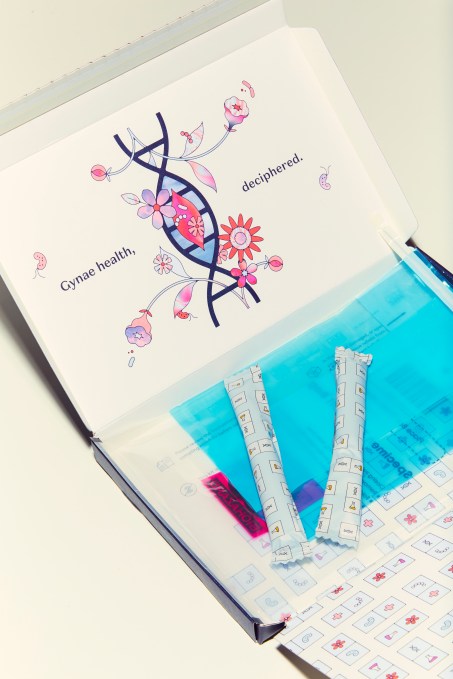
Image credits: Daye
Expanding on its overall positioning and approach, Milanova reiterates: “Again, this has to do with our intention to democratize access to what is otherwise really complex information while also enabling access to better gynaecological care. We often think of gynaecologists as specialists because they specialist in female health but that’s a misnomer because female health is so broad. What we should instead have is endo specialists and contraception specialists and menopause specialists and PCOS specialists and vaginal infection specialists. But in the UK you don’t even get a gynaecologist to do your pap smear or to give you contraception. It’s your GP, it’s your general practitioner. And there’s only that much knowledge that they have on contraception — or on vaginal infections. Because they don’t specialize in this and it’s also not taught in medical schools. Contraception prescriptions are not taught in medical schools. Or vaginal infections are considered this mundane issue and as a result the way that we treat vaginal infections is also quite flawed because we over-rely on anti-fungal and antibiotic treatments which actually place women at a higher risk of recurrent infections as they disrupt your lactobacilli in your vaginal microbiome.”
During our chat, she also goes off — with only the mildest of prompting — about the evils of scented feminine products and douches, eviscerating the cynicism of stinky stuff that relies upon generating sales by encouraging women to think their bits smell bad. The irony here is that perfumed feminine care products lead to actual gynae health problems because they can trigger conditions like thrush (yeast overgrowth) in the vagina or BV (also caused by overgrowth of the wrong kind of bacteria in the vagina) — which may in turn lead to unpleasant (and smelly!) vaginal discharge and make women more vulnerable to catching STIs… So it’s a truly vicious cycle women are being sold by all-too-many mainstream ‘femcare’ brands.
Horrifyingly, perfumed tampons are actually a real thing that exists. But you won’t find Daye selling anything so drastically anti-woman. (And, in a direct swipe at Goop, Milanova says that as part of the launch of the vaginal microbiome screening kit it will be offering a limited edition “Your Vagina Smells Fine” candle… So touché Paltrow.)
“Don’t get me started on the things that are supposed designed to make your vagina smell better,” she adds. “Your vagina smells fine. Everyone’s vagina smells fine… This whole feminine washes and douches industry, it has been shown to decrease your vaginal health. In the US, for example, about 30% of the tampon market is scented tampons. So even your used tampon has to smell good, apparently! But vaginal douching, vaginal washing, any scented douches and period care items they disrupt your vaginal microbiome and they leave you prone to greater risk of vaginal infections — including STIs.”
Funding squeeze on women’s health innovation
Instead of wasting money on mindless marketing add-ons that actively harm women’s health, Milanova says Daye is funnelling funding and revenue into R&D and genuine innovation: Not ‘stinking and pinking’ feminine care products but trying to close the research gap affecting gynae health. And producing more sustainable femcare products — which is important given how much environmental harm and polluting plastic waste is generated as a result of mainstream period care products — that also raise the bar on convenience, such as with features like its tampon’s biodegradable, flushable wrappers.
Daye sells bamboo pads, too (bamboo is considered more environmentally friendly than cotton as it’s quick growing and requires fewer resources to produce) — and plans to add period pants to its product range — so it’s not going all in on tampons to the exclusion of other options, either. On this, Milanova says it’s not Daye’s place to dictate women’s period care choices but rather to offer better options.
In further product developments, she says it’s working on a flushable tampon applicator that’s being designed to biodegrade in water like the tampon wrappers to further push the bar on convenience and sustainability. And also mentions another bit of work-in-progress in its R&D labs: A menstrual cup that can double as a diaphragm — so one part period care, one part contraception… Truly innovative stuff!
You really have to wonder what the feminine care industry (and the environment) would look like had research into women’s health — and funding for female health issues (not to mention female-led startups) — not been so drastically neglected for decades.
As Milanova points out, the underlying research into using tampons to gather diagnostic samples from the vaginal canal actually dates back to the 1990s — when researchers at a UK university ran a study with sex workers using the method. So why wasn’t anything done with the insight that tampons could double as women’s health screening devices before now, we ask? None of the researchers she put the very same question knew the answer is her response.
But lack of funding for women’s health — and an associated lack of belief there’s a large enough market for products solely addressing women — is the likely reason. After all, Milanova points out that consumer goods giant Proctor & Gamble toyed with developing a pain-relieving tampon all the way back in the 1970s before abandoning the project as too niche. “There’s many examples of gynaecological health innovation that doesn’t make it through the cycles of innovation as quickly as it could — and a big part of that is the lack of access to funding,” she suggests, pointing out that just 2.5% of all public funding in the UK goes to female health, while some 35% of UK women have a chronic gynaecological health condition. So it’s a case of mind the massive ‘innovation stopping’ gap!
“Daye has had multiple moments throughout its journey where we could have been one of those ‘failure stories’ — not failure stories but you had a great idea but you didn’t manage to bring it to market because access to funding is so incredibly hard,” she continues. “And I think that that access to funding is so hard because people still fundamentally feel deeply uncomfortable with the subject that we’re covering — and it’s both men and women that feel super uncomfortable when we talk about vaginal health or the vaginal canal… I can’t describe why screening through tampons is better without mentioning the word vagina and mentioning the word tampon but these words are still perceived as dirty words, as stigmatized words. And I can see how — whenever we pitch — people just feel uncomfortable. They look to the floor. They avoid eye contact.”
Including, Milanova recounts, one of the employers Daye was invited to recently to give a “lunch and learn” presentation about the business and its gynaecological health mission, as part of its B2B outreach — only to receive feedback afterwards that its “fantastically pro-women” presentation “didn’t take into account how the men in the room would feel — and the men in the room felt really uncomfortable by the frequent mention of the word vagina”…
Yes, really. Daye was told not to scare the men with the word “vagina”. In 2022.
The only word for that situation is an expletive.
She also talks with animation about how “gruelling” a process it was for Daye to raise the Series A — arguing there’s a “toxic narrative” in play that continues to work against under-invested founders by encouraging them to think they’re failing (and persuade them to throw in the towel) if they haven’t landed an over-subscribed funding round in a few short weeks.
In reality it’s the VC industry that’s failing these founders — and failing half the population by ensuring women’s ongoing exposure to toxic products that inexorably bubble up to fill the innovation vacuum. Much like conspiracy theories and fake news rush in to plug holes in the public infosphere of the Internet.
“[Raising funding] is something we’ve really struggled with at Daye,” she tells TechCrunch. “We didn’t have the dream fund raise of, you know, ‘it took us two weeks to close everything, it was super competitive and we had offer after offer that we rejected’. That wasn’t the experience that we had and it’s not the experience that most gynaecological health companies have when they fundraise. We have over 418 funds on our investor tracker — so those are funds that we have emailed, pitched to, spent time in due diligence with — and the fundraising process that [CEO] Lisa [Rodwell] and I went through was gruelling. It was just an average of 40 hours per week, every day since the beginning of January — which is when we started fundraising — to the end of August, when we closed our fund-raising process.
“And I felt so much shame and guilt as a founder that I didn’t manage to have this [dream fund raising experience]. Because you must have read, you know, ‘the Sequoia guide to how to close your Series A in two weeks’ or [advice such as] ‘if you’ve spoken to more than 40 funds then you’re a failure’. So I wanted to make a point when we were announcing this fundraise that it wasn’t easy for us — and I don’t think it’s easy for most gynaecological health companies — and that’s okay: It doesn’t matter how many nos you get, you get one yes. Or two yeses in order to close your round. Because we have this toxic [fundraising culture] which fits men great because as a male founder there’s plenty of studies that show the questions that you get are different and the due diligence that you go through is much lighter… So I really think we should change the narrative.”
“You’re not a failure as a company if you don’t close a round within two weeks with, you know, only top tier investors,” she finishes, pointing — triumphant — to the fruits of this gruelling toil. “Lisa and I allowed ourselves to stop thinking in this way — to stop seeing ourselves as failures because we didn’t raise in this [hyper-idealized] way… That’s how we able to find firms that we really connected with, who really understand the product. So the three investors that are now leading the round — they understand what we’re building in an incredible amount of detail — and I think that sets the relationship up for success from the start.”
Flush with Series A funding, Daye unwraps the big gynae health mission by Natasha Lomas originally published on TechCrunch
from TechCrunch https://ift.tt/xRjrDPq
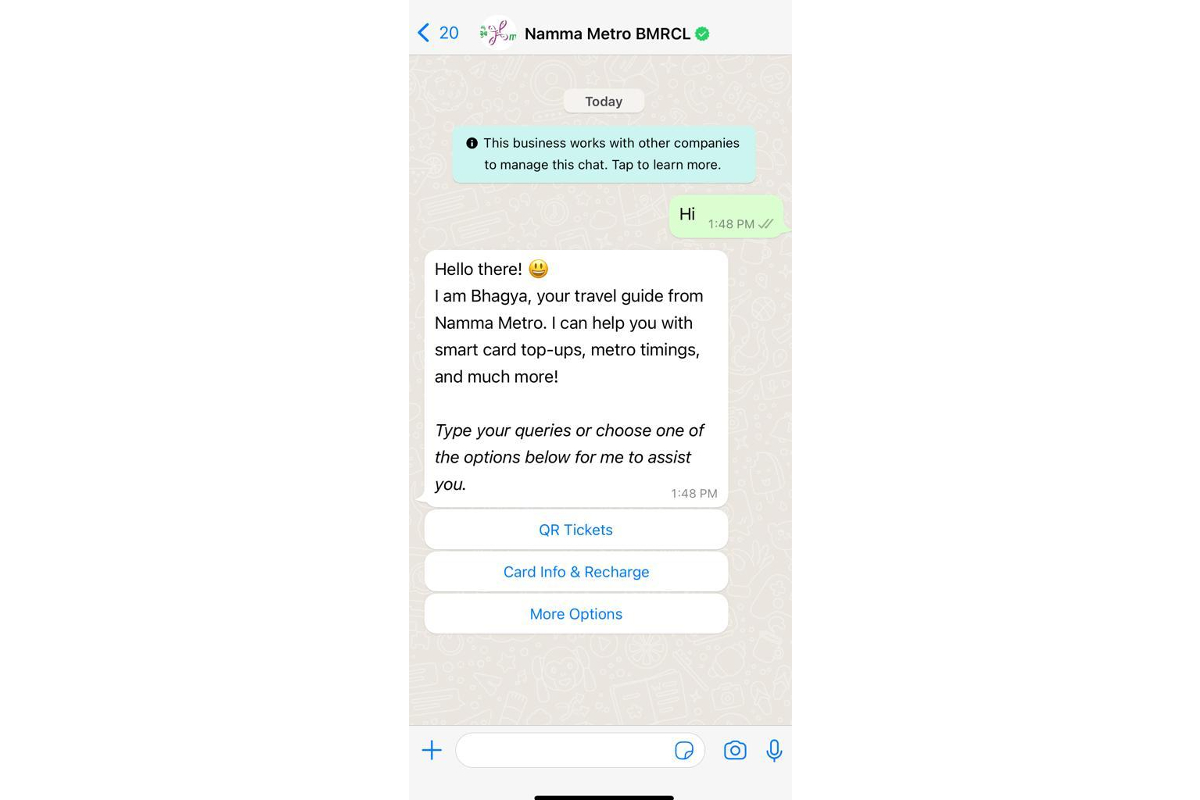













 rules.
rules.

